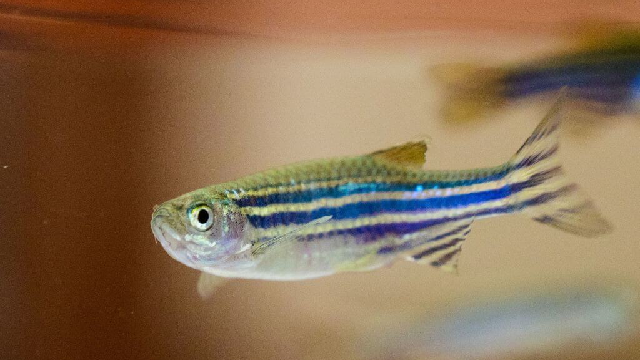Speaker system helps scientists understand brain networks of baby fish.
This resource is best suited to Year 9 and 10 Biology and Physics students to highlight an unexpected field of research in STEM. It is particularly well suited to those learning about waves and survival traits of species.
Word Count / Video Length: 466 / 0:16 mins

A DJ-turned-researcher has designed a speaker for zebrafish larvae, playing them a range of beats from sounds they would encounter in the wild to MC Hammer’s classic “U Can’t Touch This”.
The results, published in the journal Current Biology, reveal that the larvae can hear much better than previously thought.
Hearing underwater is crucial for fish survival, allowing them to detect predators, find food, and communicate. Studying their auditory processing may give us insight into mammal hearing.
This new study – led by Rebecca Poulsen from the Queensland Brain Institute at the University of Queensland (UQ) – combined a fishy speaker with whole-brain imaging, tracking how the fishes’ neural circuits lit up in response to different sounds.
“For many years my music career has been in music production and DJ-ing – I’ve found underwater acoustics to be a lot more complicated than air frequencies,” Poulsen says. “I designed the speaker to adhere to the chamber the larvae are in, so all the sound I play is accurately received by the larvae, with no loss through the air.”
Larval zebrafish were used as a model because they are so tiny the researchers could study their whole brain under a microscope.
Whole-brain imaging of zebrafish larvae, while the fish enjoy some music. Credit: Rebecca Poulsen.
“Their auditory system is also developed enough for us to get meaningful insights into auditory processing,” Poulsen adds. “Because we see the whole brain and the activity of each cell within it, we can build models of auditory processing in a way that is not possible in any other vertebrate model system.”
A variety of different sounds were tested, including running water, other fish swimming past, objects hitting the water’s surface, and predators swimming up. The researchers were interested in testing whether the fish could tell the difference between different frequencies, white noise, sounds with sharp onsets or sounds with a gradual crescendo.
“We found unique neural profiles for each of these various components of sound,” Poulsen says. “This adds to what we know about larval zebrafish hearing and shows the auditory system to be more sophisticated than previously thought.”
Co-author Ethan Scott, also from UQ, explains: “Conventional thinking is that fish larvae have rudimentary hearing, and only hear low-frequency sounds, but we have shown they can hear relatively high-frequency sounds and that they respond to several specific properties of diverse sounds.”
Their results demonstrate that the larvae can detect frequencies up to 4000Hz (in contrast to the 600–800Hz shown from previous studies) and discriminate between frequencies up to 2500Hz.
“Because we have the ability to look at the whole brain responding to sound in the larval zebrafish model, we can potentially gain insights into auditory processing at a whole-brain, regional, and cellular level that will be relevant to other animals, including humans,” Poulsen concludes.
This article is republished from Cosmos. Read the original article.
Login or Sign up for FREE to download the educational resources





